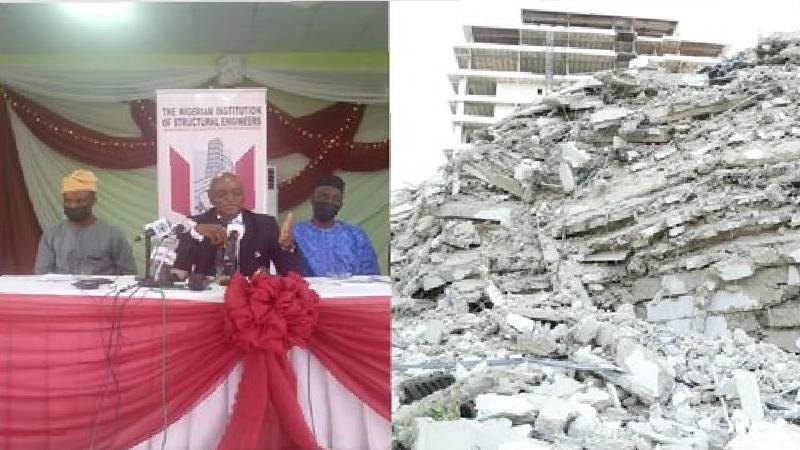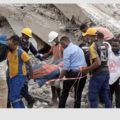By Onyinyechi Ugwoke
The Nigerian Institution of Structural Engineers (NIStructE) has commiserated with the families of those who lost their loved ones at the collapse of the 21-storey building in Ikoyi describing the unfortunate incident as a structural engineering disaster.
In a press briefing on Monday, the president FNIStructE; FNSE. Kehinde B. Osifala disclosed that, the building that collapsed was initially designed for just six (6) floors, and later to Twelve (12) floors, before this was further changed to Fifteen (15) floors.
“It could not yet be established the adequacy of any properly designed and documented further revision to the eventual (and tragically, final) Twenty-One (21) floors that was being implemented and which collapsed.” he said.
He explained that, the institution refrained from making speculative comments until now when findings from the preliminary investigation were available.
“It is therefore seldom likely that accurate conclusions can be rushed without first carrying out the prerequisite investigations, testing, and computations.”
Osifala disclosed the institution’s findings, “there are indications of several design brief changes on the project and the engineering and management of these changes appear to have been seriously inadequate.
“more than two (2) structural engineeringdesign firms worked on the project at different times.
“evidence of structural inadequacy in the construction and that signs of some structural distress had already started to show within certain elements of the building.
Lack of proper quality control and quality assurance measures and processes during the construction was_ evident becoming noticeable as seen in the poor-quality of concrete materials and workmanship observed during the examination of the collapse debris.”
Osifala said, there is need for further investigations on the findings, so that all factors related to the cause or causes of the collapse can be truly established and the appropriate lessons identified and implemented.








